After a 10 hours train ride from Beijing we reached Dandong – a city on the bigest China – North Korea border crossing, checked out an old bridge which used to connect two countries, but was destroyed by Americans during Korean war, grabbed some snacks and started passing the border.
Chinese border check was nothing very special, however after we crossed a new bridge to the DPRK side, interesting things started: we were met by an abandoned ship, an empty pool, a rusting amusement park, uniforms and a feeling of coming some 70 years back.
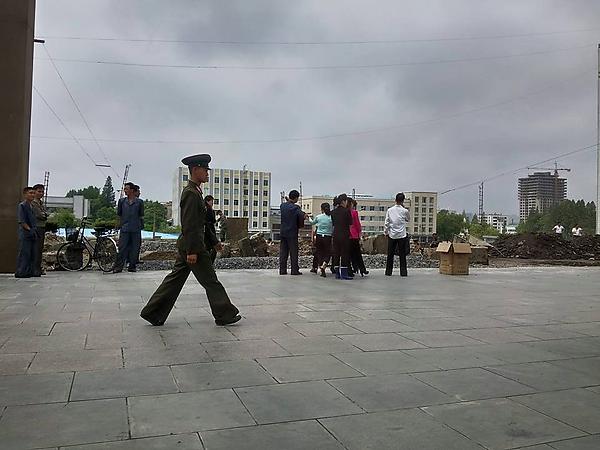
The first railway station on the DPRK side is being rebuilt. And it’s being done by handwork. For already 3 years. And still at the basement construction phase. The workers are motivated and cheerred up by a band playing on a platform. All the border officers were probably also quite cheerfull because of the band, so the checks didn’t take long – an hour or two. Besides quite regular procedures of declaring your personal, health, work, related information, cash, etc., we had also to declare all electronical devices and books, magazines, etc. As no one was carrying anything illegal (except one American guy who had a pocket translator device, which was taken by the officers and will be handed back to him on departure), we all passed and now are heading towards Pyongyong.
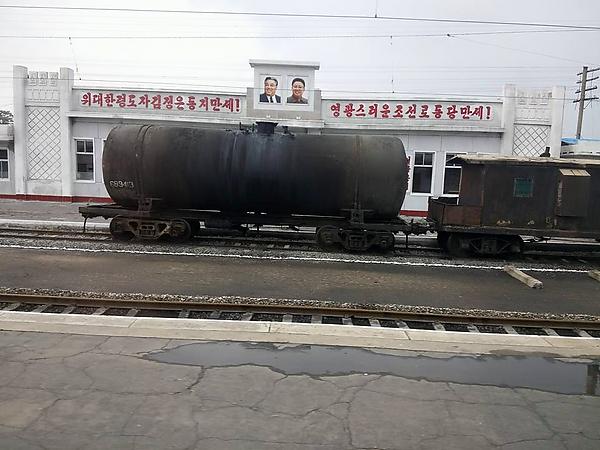
The train ride takes already 2 hours longer than planned – we are stopping every 5 kilometer or so but it’s fun – more opportunities to explore rural lifestyle outside the window. And that lifestyle is something, l believe, was happening in Lithuania 60 years ago: handwork in fields, plows pulled by cows/bulls, very few tractors, dirt roads, very few cars on them, some bicycles, mopeds, some carriages, fishing, waving to a passing train, garbage, all the same houses, chicken shepards and so on. They mainly grow rice here. And some corn. And cows, hens and goats. Bigger towns have concrete roads, but almost no cars on them, blocks of flats and propaganda monuments/posters everywhere.
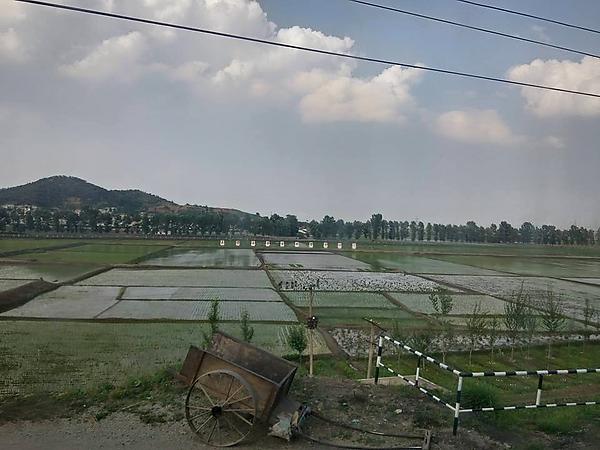
Pyonyong. Wow. It is something different than we saw in a countryside. Wide asphalt roads, tall concrete and glass buildings, aquapark, amusement park, massive stadiums, long bridges, some cafes, restaurants, book shops, convenience stores, etc. Something that I did not expect, having in mind country’s economical situation in general. Some cars, trams, trolleybuses, buses, trucks on roads. And sometimes even some traffic jams of some ten cars next to traffic lights or uniformed policemen regulating traffic (I read somewhere that a traffic regulator is a dream profession in DPRK, but one of our guides busted this myth. Who could want standing in a middle of the crossroads in a heat of summer or in a snow in winter, she said. Well, yes.
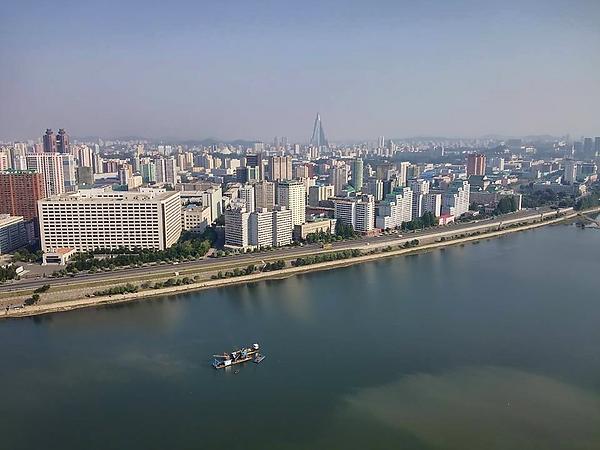
Talking about our guides – our group of 15 or smth people is guided by 1 foreign guide – Rowan – an Australian based in China – cool guy (approved by Amanda) and 4 locals: senior guide – Mrs. Kim, junior guide – Miss Jin, guide – Mr Pang and a driver, Mr Sin.
These 5 people were taking care of our group for 5 days in Pyongyang and around.
Friday 12th June. After arrival by train and check in at Yanggakdo Hotel (double room which I shared with a Dutch guy Ramon – the one who doesn’t speak Korean, but knows around 50 Korean songs by heart and who was the biggest entertainer of our group during every night’s karaoke parties for two weeks), we had some drinks, dinner, played bowling, sang karaoke and had fun.
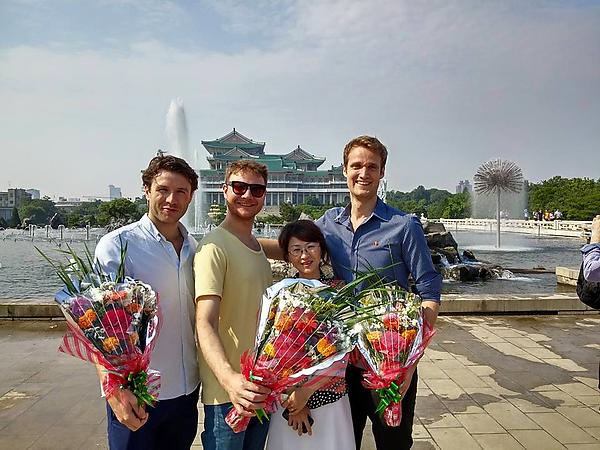
Saturday 13th June. We walked through Mansudae Fountain Park and visited the Grand Monument to show our respect to the Great Leader President Kim Il Sung and the Dear Leader General Kim Jong Il. Showing respect means lining up and bowing all together. And we used to do this in front of every monument to the leaders for two weeks (and there were plenty of these monuments). In the grandest places we used to present flowers as well. Other rules next to the monuments included, but were not limited to: no laughter, no unzipped jumpers, no bags, no smoking, no funny pictures, pictures only after guide’s explanations and a bow, pictures only with a full view of the monument, etc.
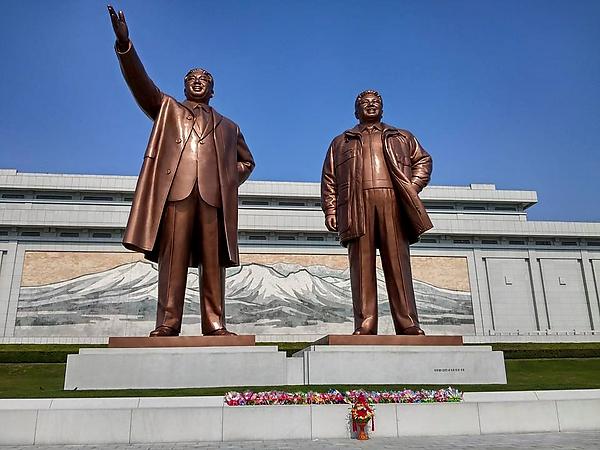
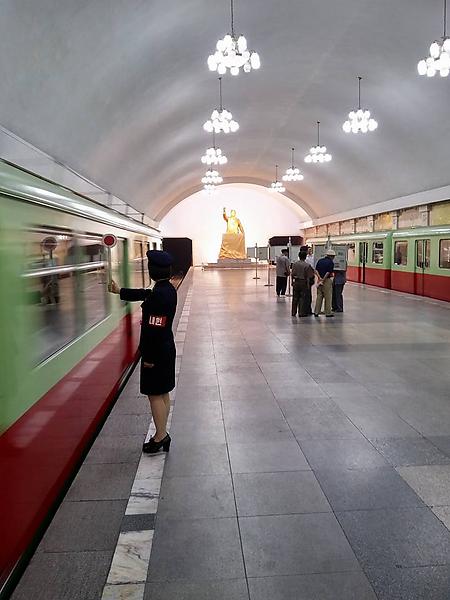
After some bows we took a ride on Pyongyang Metro with locals, visited The Arch of Triumph- the largest Victory Arch on the planet- it celebrates the Korea’s victory over the Japanese and the return of the general Kim Il Sung to his home city.
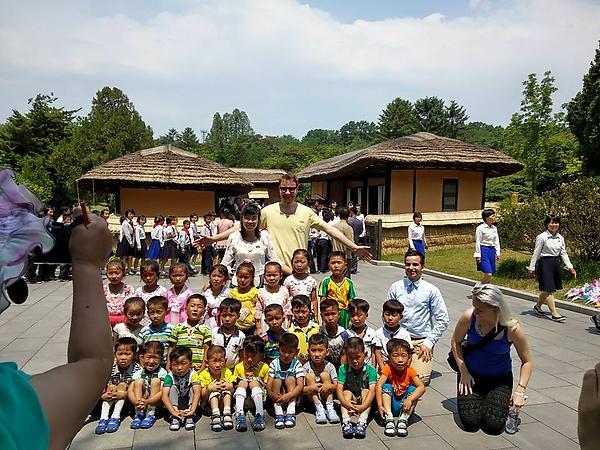
Then – Korean War Museum with lots of tanks, propaganda and captured USS Pueblo – the only US Naval Ship still held captive by another country. Ha ha. Yankees go home.
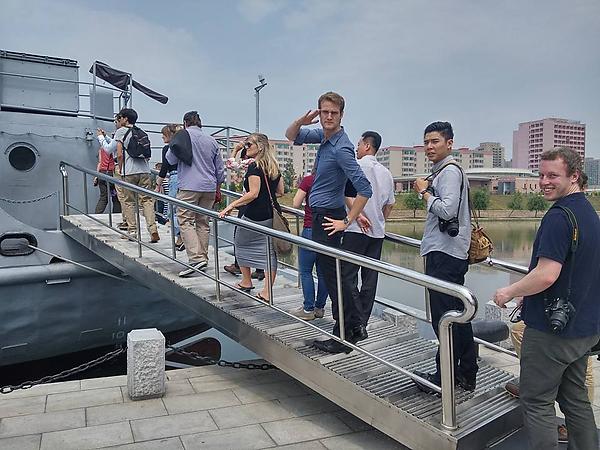
I won’t be describing every site we visited in Pyongyang during these 5 days, but just mention some of them: Juche Tower- the tallest stone tower in the world, it represents the eternally burning Korean Juche Ideology; the Monument to the Three Charters of National Reunification; the Monument to the Party Foundation- built in 1995 to celebrate the 50th anniversary of the founding of the worker’s party, etc.
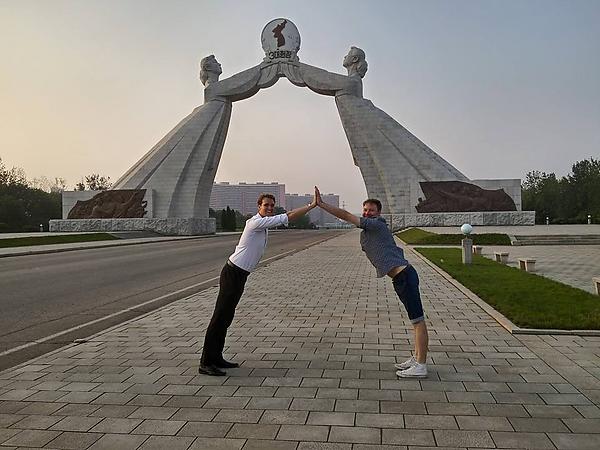
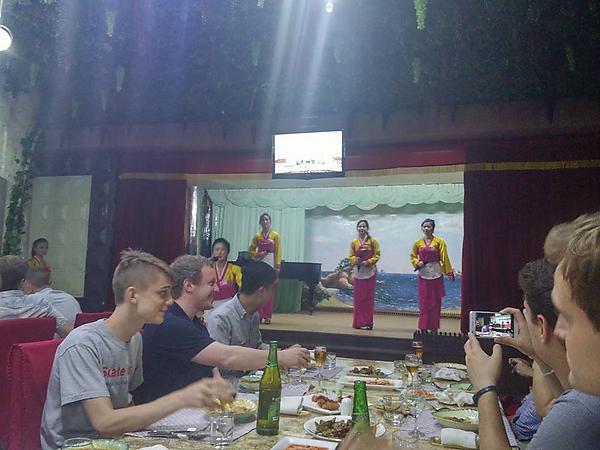
What is more interesting – singing and dancing waitresses during every lunch and dinner. And Ramon joining them. And the rest of us joining as well. So every meal was not just a meal. It was a fun meal, party meal, singing and dancing meal. Dishes were also good. Traditional pickled cabage – Kimtchi, sea food, noodles, sallad, meat, soups (some made with dog meat. Yes, dog), etc. Strangely, there was no fruit, however when we visited a local market in north town of Rason, we
saw that North Koreans have lots of fresh fruit. Why not to serve it for tourists in Pyongyang? Drinks usually included but were not limited to beer (regular lager) and souju (or however the name of that local liquor of some 30 percent of alcohol is spelled).
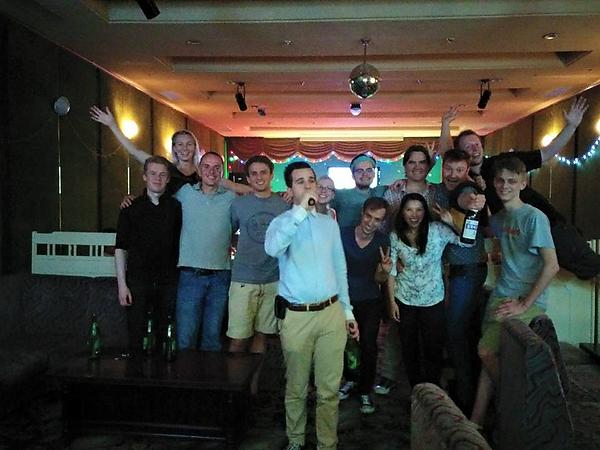
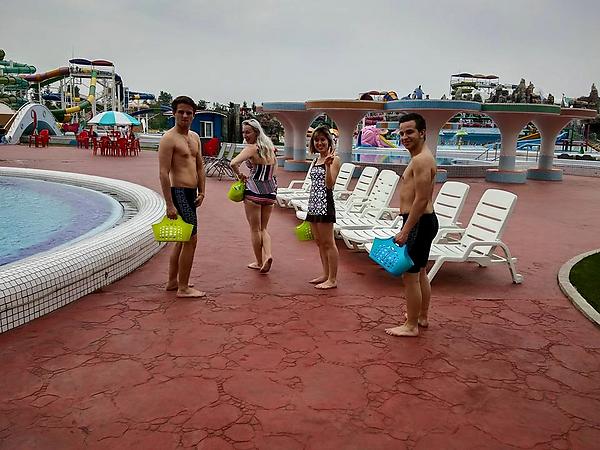
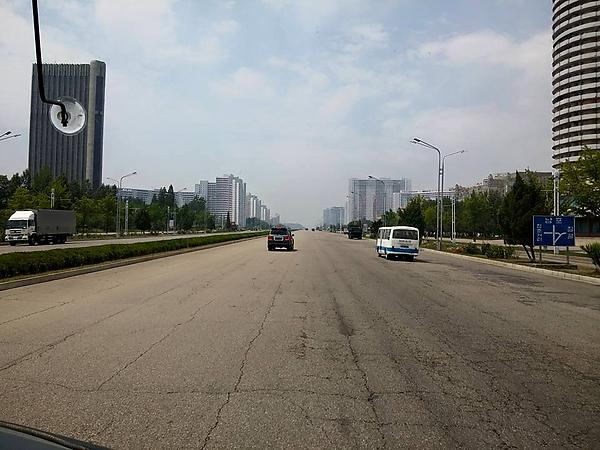
Some more very interesting and fun attractions which we visited: very cool waterpark with slides and saunas and bars, funfair (aaahhh from the top of the free fall tower, especially when listening to Rowan’s story about 40 mins electricity breakdown once he was on top of the tower. Besides – electricity breakdowns are very ussual and we experienced plenty of them, and the city is very dark by night as for a city of 3 million), bowling alley (probably the biggest bowling alley in the world) where Sir Hugh of the Kingdom of Great Britain and Northern Ireland broke rhe record, local supermarket where we could use local money (which is usually illegal to be used by foreigners (RMB, EUR or USD can only be uesed by foreigners), but was OK here), some bookshops where I bought the Constitution of the DPRK and some other crazy stuff.
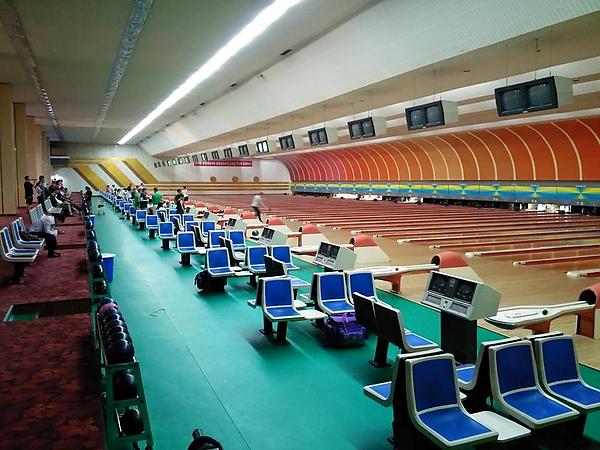
Sunday 14th June and Monday 15th June were devoted to travels around Pyongyang: Pyongsong city, the DeMilitarizedZone between South and North Koreas – one of the tensest places on earth, Kaesong City. We left Pyongyang on Tuesday 16th June.
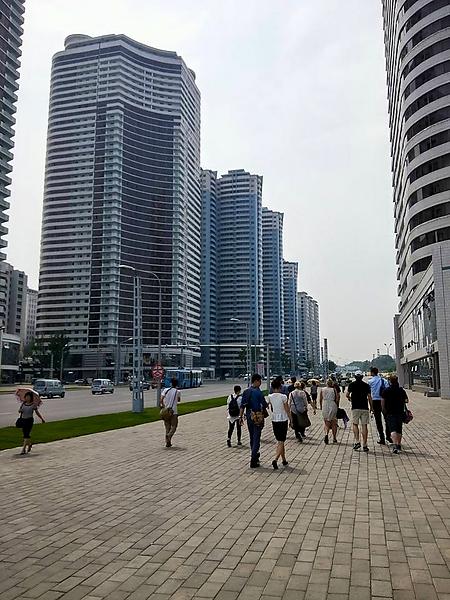
My general impression about Pyongyang – it’s a half fake city, some model which is built to show off, big and empty streets, monumental architecture, gigantic monuments, unfinished massive hotel, many things that are useless or serve only for propaganda (maybe they’ll be usefull for people some day in the future as well).
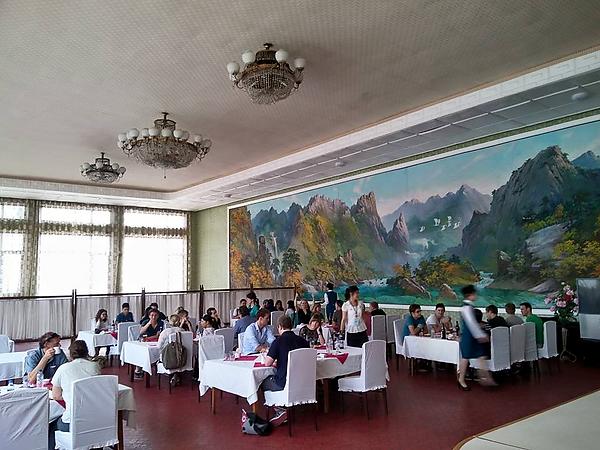
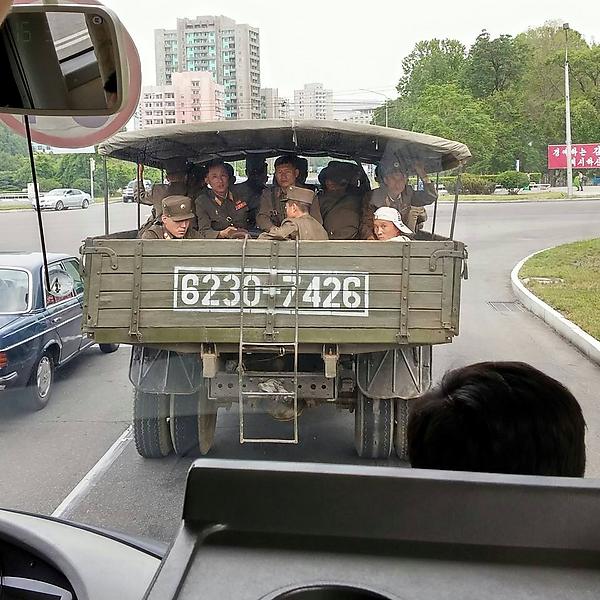
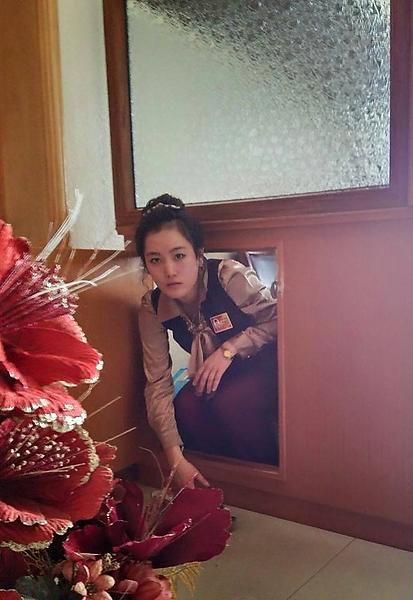
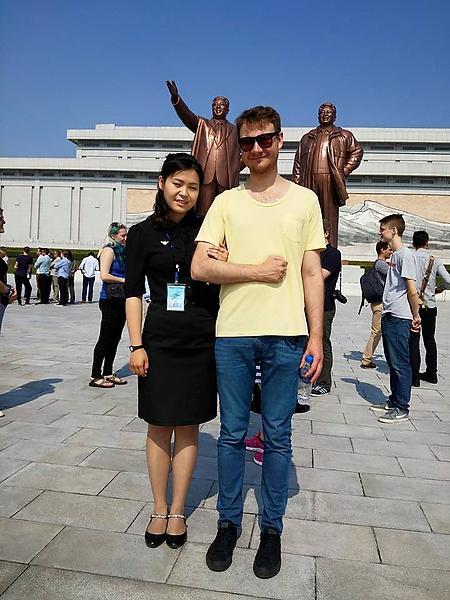
Pyongyang is not a place where one can get a full picture of the DPRK. This partially shining half fake city is just a small part of what the DPRK is (only 3 million of 20 million North Koreans live in the capital). But I also saw a small part of other North Korea – extreme North East.
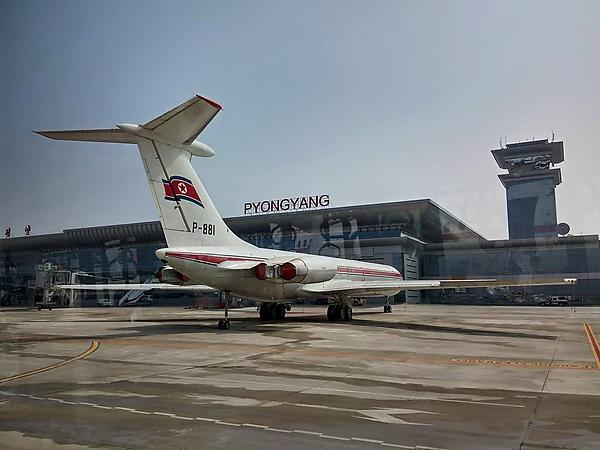
On Tuesday 16th June our group tipped our guides, gave them some presents, had a sorrow fairwell and took a domestic Air Koryo flight to Orang Airport (near Chongjin city). Aircraft was OK, the airport of Orang – something similar to Kaunas (Lithuania) airport 15 years ago. Here we met our new local Korean guides (4 cool guys including a driver) and drove to Heoryong city – the birthplace of Dear Leader General Kim Jong Il’s revolutionary mother – Mother Kim Jong Suk. You can imagine how many revolutionary sites we visited here and how many bows we made. After our bows and a lunch we drove to Namyang border crossing to collect new members of the group. A drive in the extreme North East of the DPRK is some unusual experience. Mountain dirt roads, bumps, holes, almost no road signs, and really fast driving. A party that night with new guides (one got drunk quite well), new team mates, waitress performance and lots of songs, dances and shouting („for Amanda”, „zheleznaja roodahr”, etc.) were notuncool.
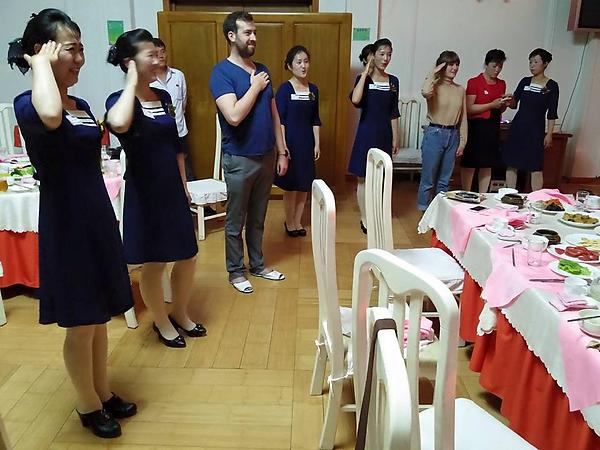
On Wednesday 17th June we visited a scondary school and had some conversations in an English class and a football match with schoolchildren. Then – Chonging library with fake users of computers and a sauna. I won’t be mentioning all revolutionary sites, monuments and bows any more.
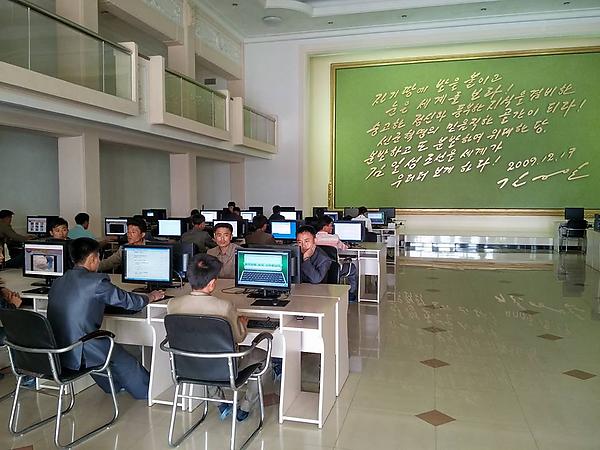
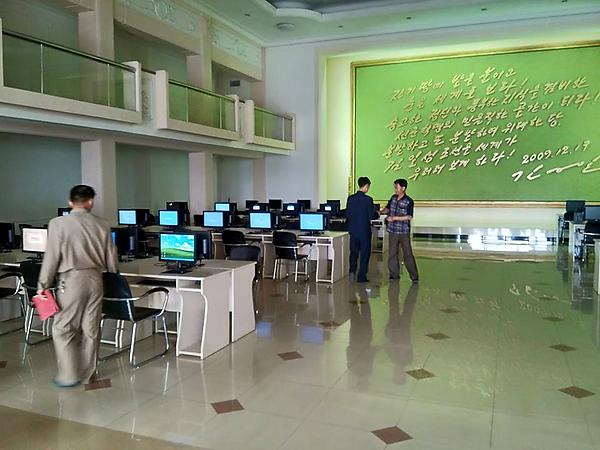
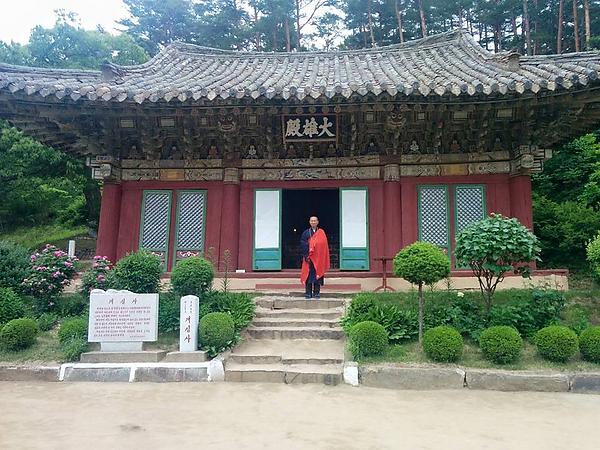
Thursday – Saturday 18-20th June were almost propaganda-free days. We went to Mt. Chilbo, visited Kaesim Buddhist Temple (some observers say that religious worship places in the DPRK are fake – just to show foreigners that freedom of religion exists in this country), saw some very beautiful sceneries and the world’s largest mineral painted map, stayed in a small mountain hotel and next night – in a homestay village on a beach, hiked to some rocks and waterfalls along the famous Tokgol and Gangsonmun and other areas, drank some spring water with slugs, took a boat trip, played volleyball, did some wrestling, sang and danced around a bonfire, fell into a ditch, made a rice cake, had a picknic on Gangsonmun, the highest point on Mt. Chilbo, drank on a beach, shouted „Yankees go home” and finally had a spa. Yankees had to go home (hotel) instead of staying at a homestay, because Japanese and US imperialists are not allowed to stay with locals at their home (fake vilage built by the state to brainwash tourists about a nice life of North Koreans). A poor real village next door was not allowed to see.
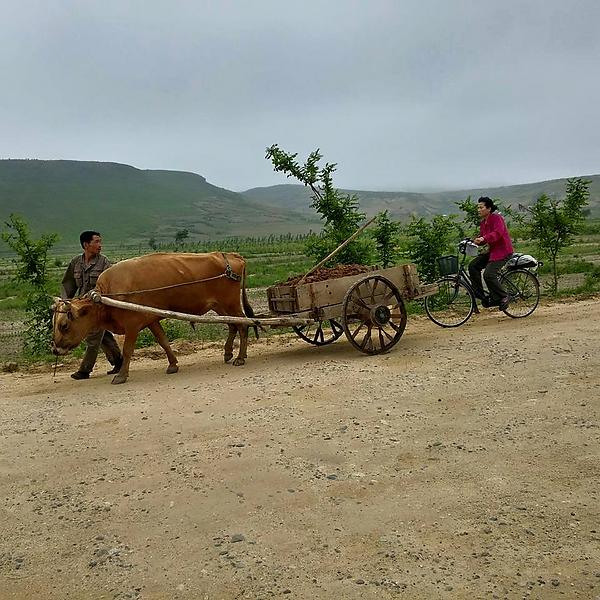
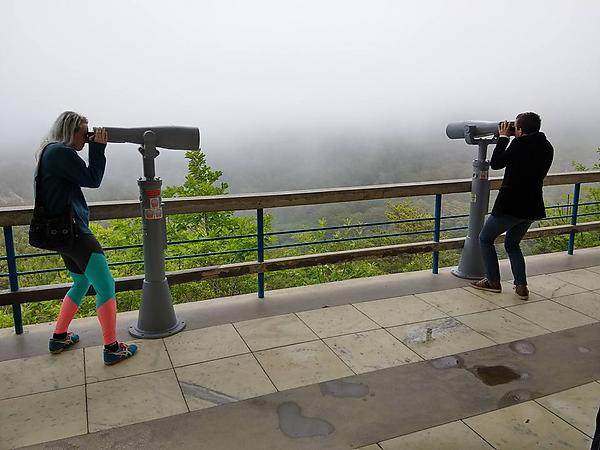
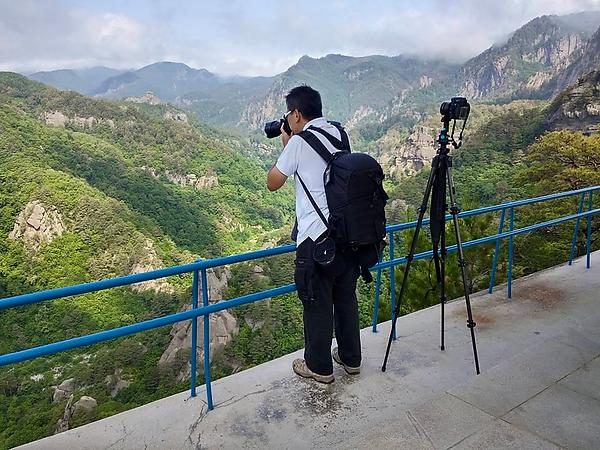
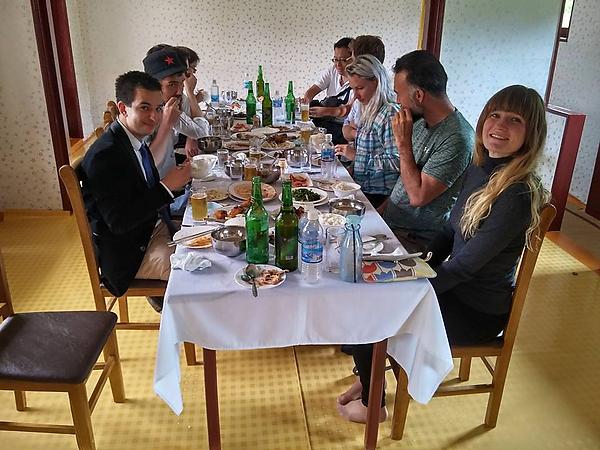
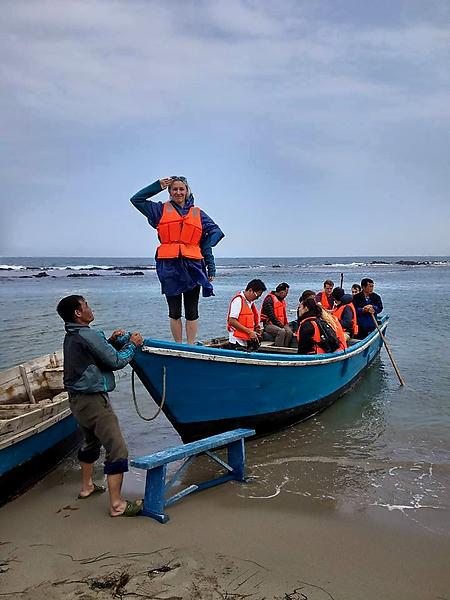
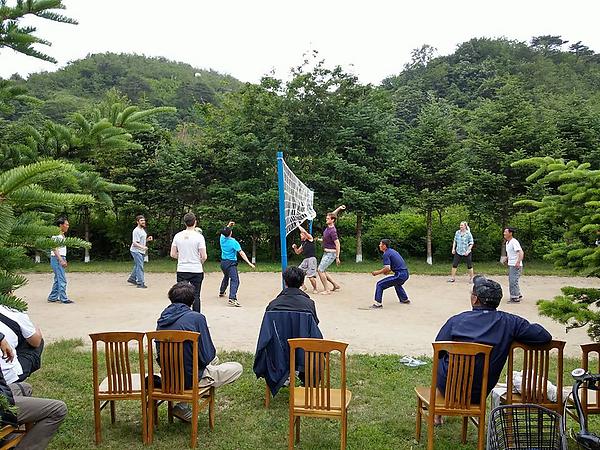
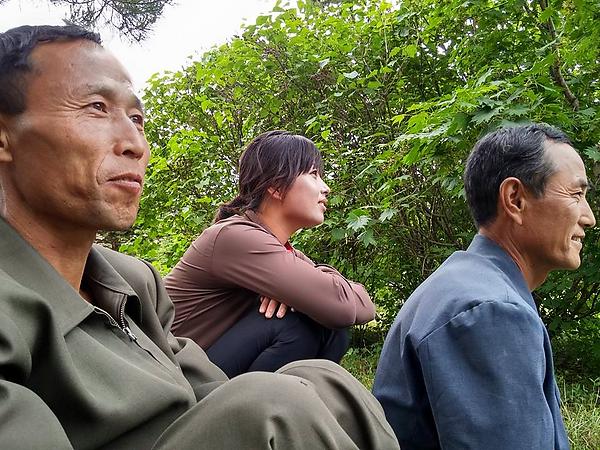
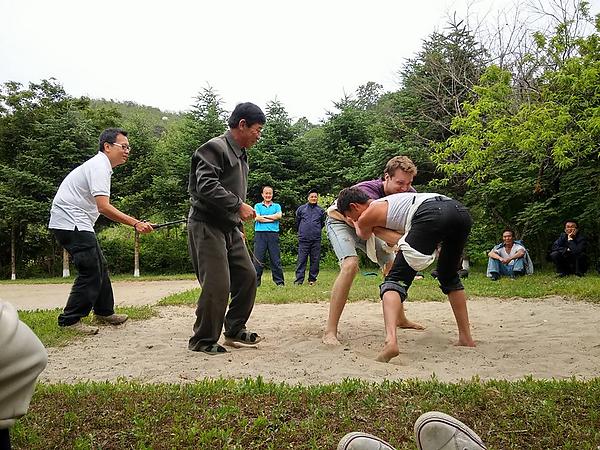
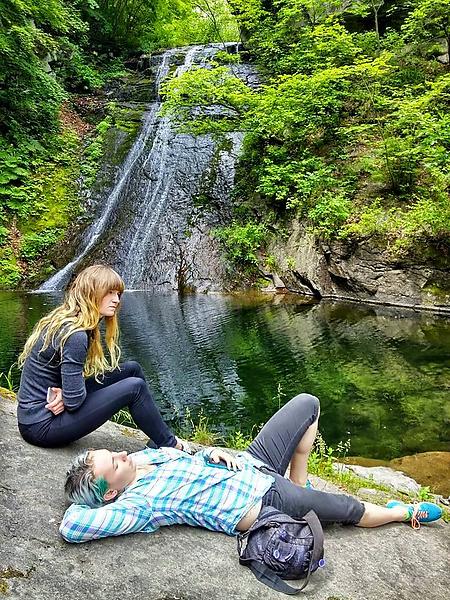
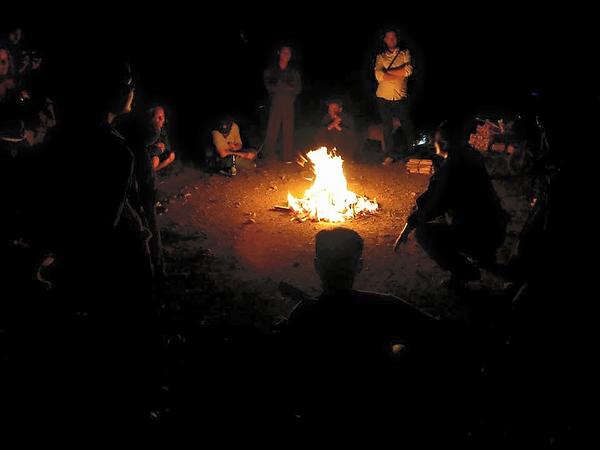
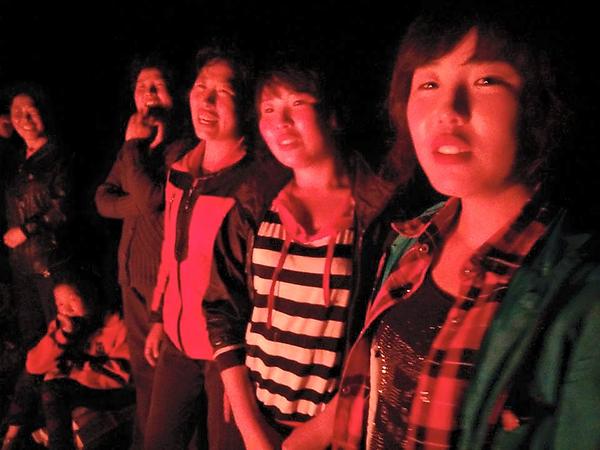
On Sunday 21st June we came back to Chonging and took a troleybus ride (empty trolleybus just for us). Then – a performance in a kindergarden and we said goodbye to our cool guides, crossed a boarder to Rason free economic zone and met new guides (not so cool). Rason is a free economic zone where foreign investment (mostly Chinese and Russian) is possible and made.
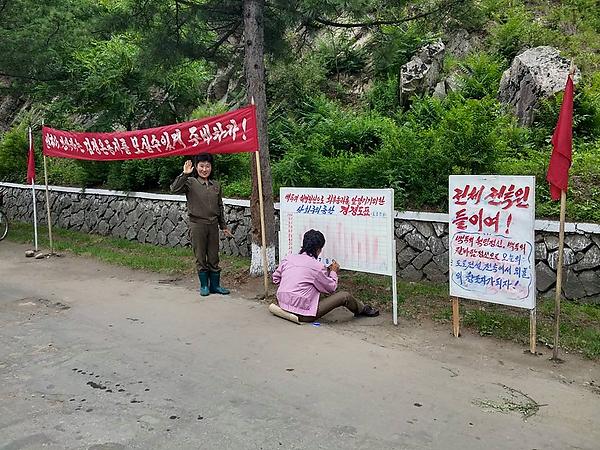
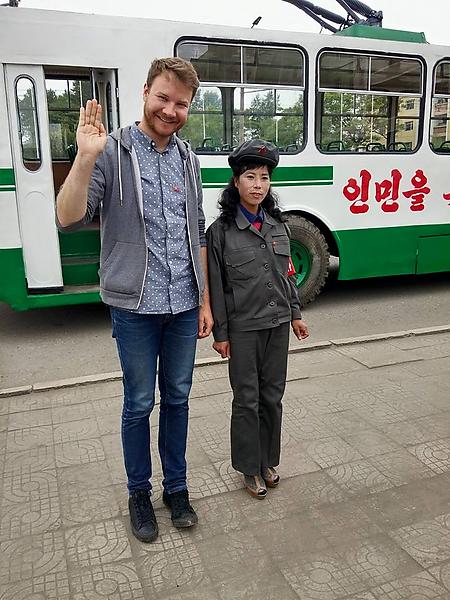
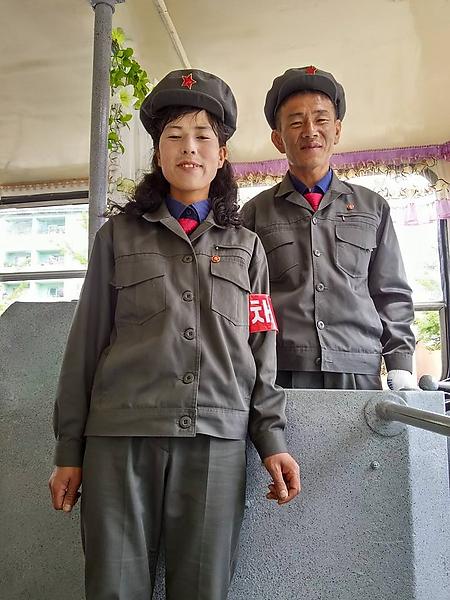
On Monday 22nd June we saw an oil refinery (built in 1971, used imported oil from Soviet Union, produced 2 million tons of fuel per year. After collapse of USSR imported oil from Libya, Iran (Koreans had to equip the plant so that it can refine not only USSR oil). Then in 1993 Clinton offered US oil in an exchange for stopping nuclear research in the DPRK. Nobody gave us reasons, but after a year US stopped supply and sanctioned the DPRK. Then oil plant was stopped and is still not working. Ha ha. Yankees). We also visited a port, a local market (where we bought some hay, which was considered pot by our guides. Besides, fresh sea food, fruit, meat, vegetable selection in that market was very rich – not as in Lithuanian markets/shops during communist rule. Unfortunately we were not allowed to take pictures), some trousers and shoe factories, which offer cheap workforce for Chinese businesses. All production is marked „made in China”, even though it is made in North Korea by Koreans on a basis of orders from Chinese businessmen. No worries.
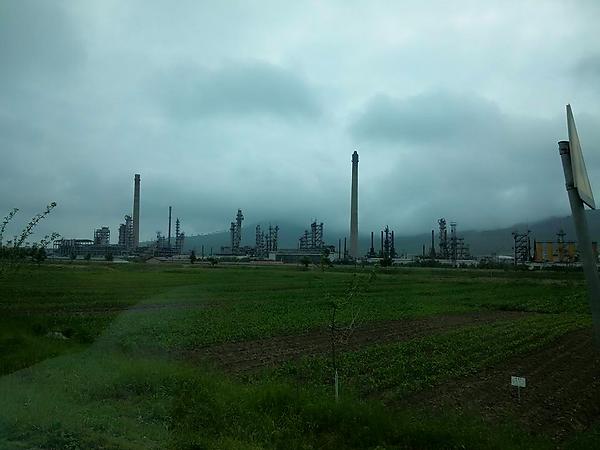
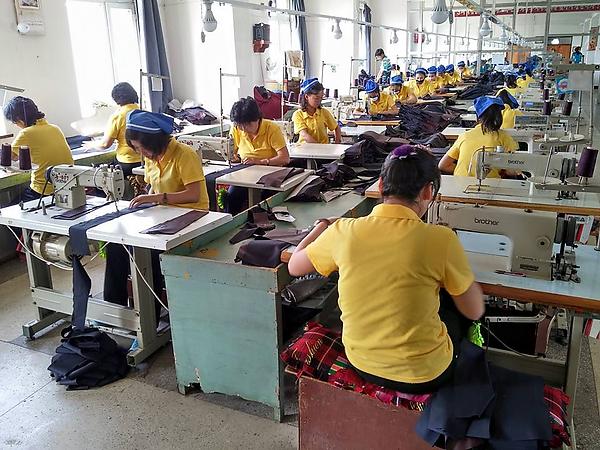
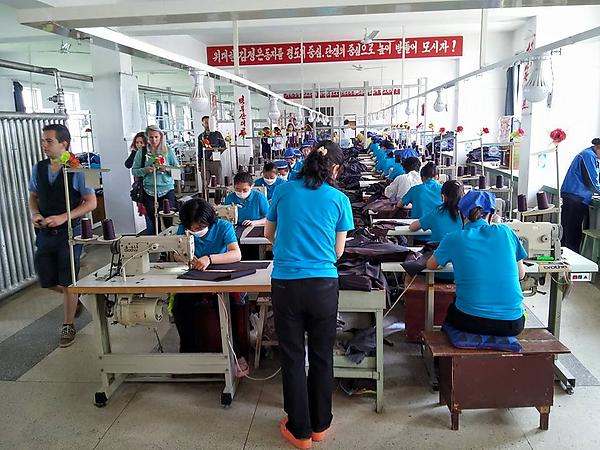
After some more sites and some more pictures in allowed places (North is not as free in regard to photography as Pyongyang – we were allowed to take pictures only there where the guides permitted) we left to China on Tuesday 23rd June. Bye DPRK.
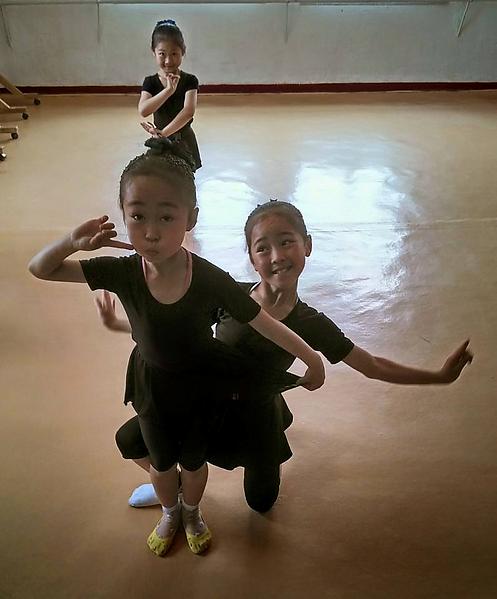
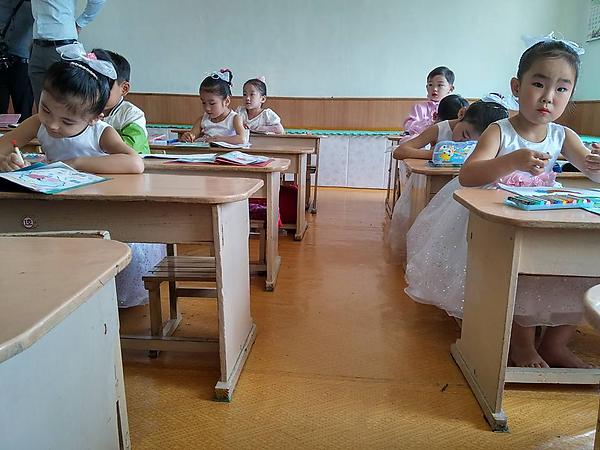
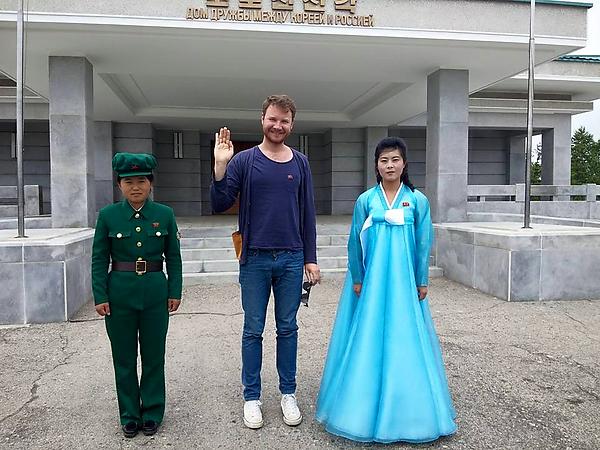
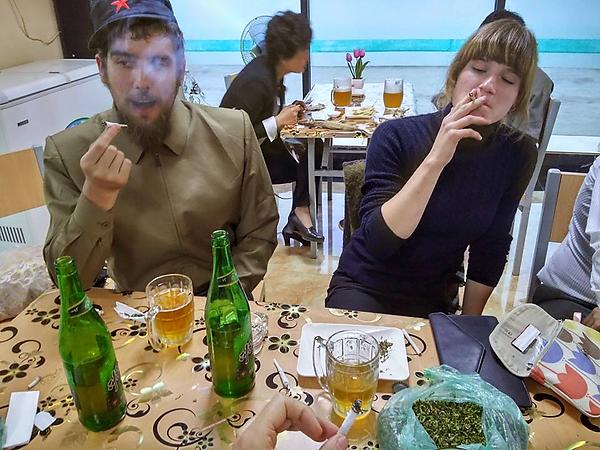
On Wednesday 24th June I took an overnight sleeper train from Yanji to Beijing. I am travelling together with Aram – a Singaporian photographer who has a facebook site „DPRK 360” and has been to North Korea for 6 times and once has met a foreign minister of the DPRK to discuss his „360” project, and is in constant contact with DPRK Tourism Board chiefs. The aim of his „360” project is to show the world that the DPRK is not as bad country as it is described in Western media. And I agree – it is not (except, according to some observers, some 200 000 political prisoners, some 15 gulags, some unclear nuclear ambitions, famine time to time, cult of leaders, restricted flow of people and information and maybe some other things). But hopefully the leadership of the DPRK will soon be ready to work not only for themselves, but also for the people. And the country will change. Or maybe not.
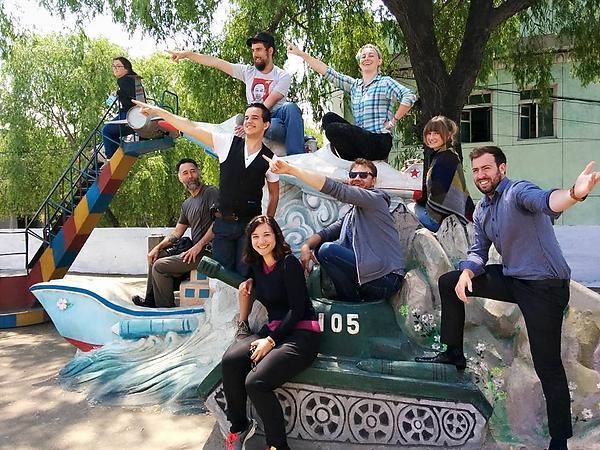




































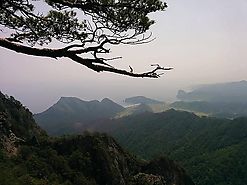
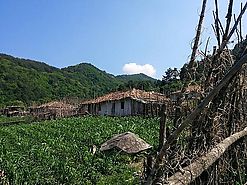
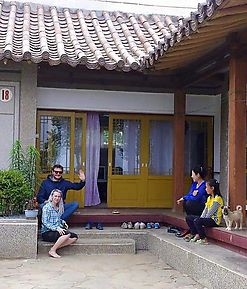












Man visada malonu skaityt straipsnius parašytus mūsų kalba, be jokių „w”, neišverstų vardų, pavardžių ir taip toliau. Buvo malonu skaityt ir šitą, tik gaila, kad autorius nepasitiki šita svetaine ir stengiasi mus vesti į „šalį”. Įdomių kelionių.